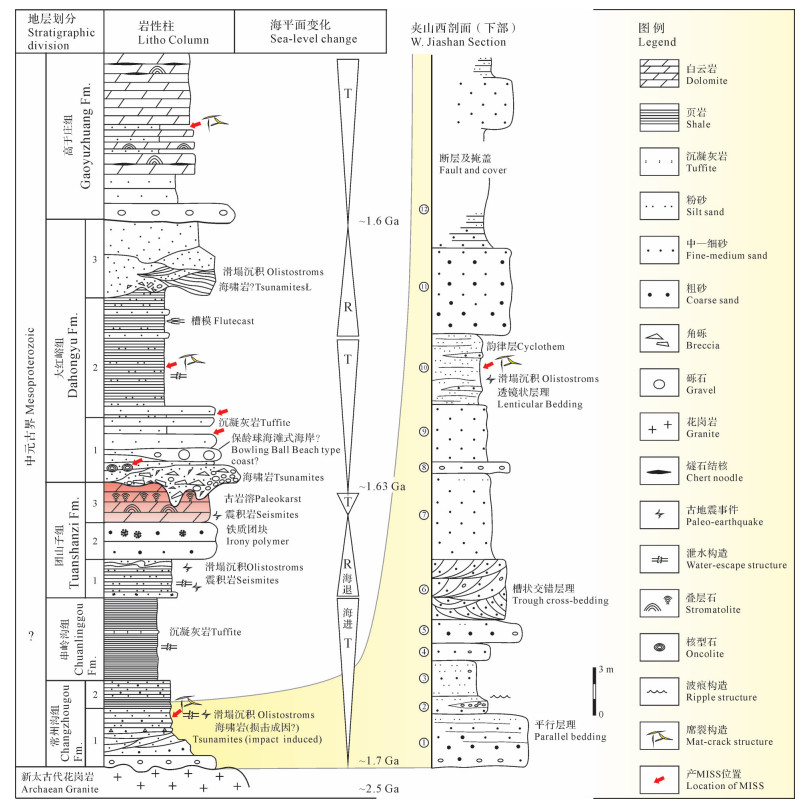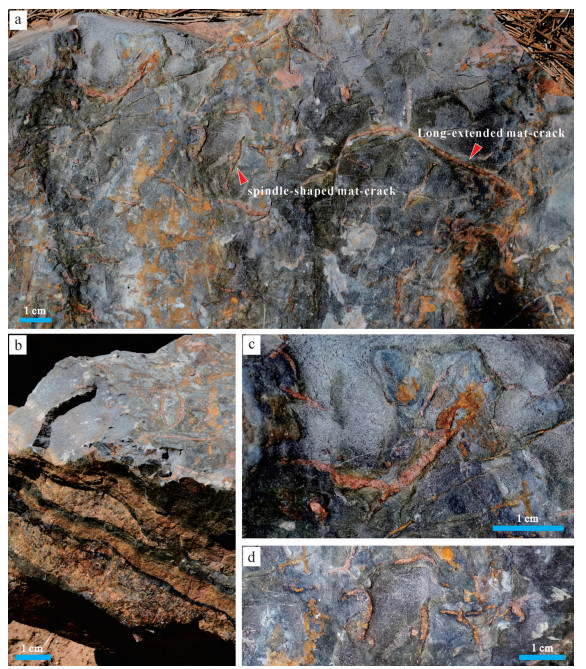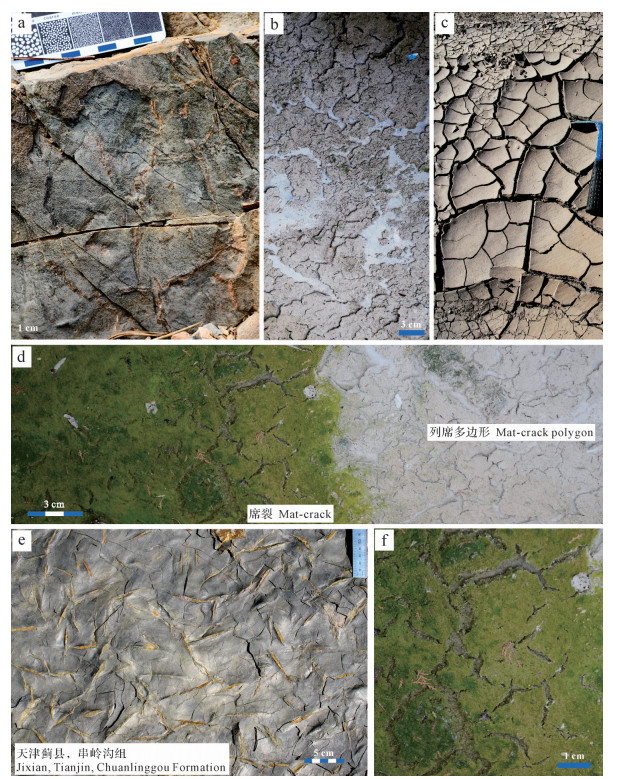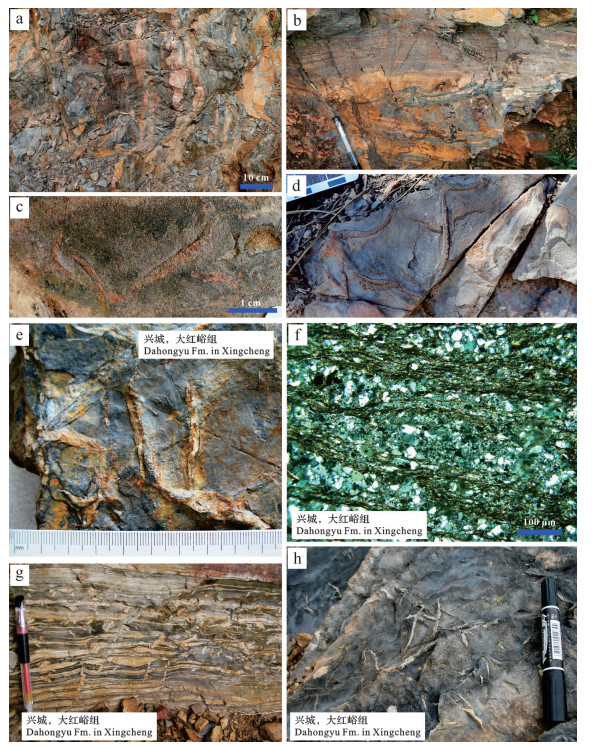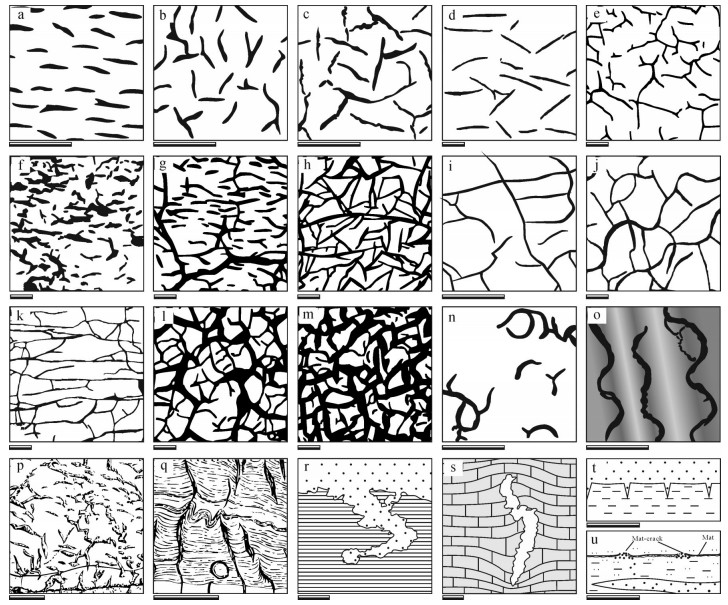| [1] |
Gerdes G, Krumbein W E. Biolaminated deposits[M]. Berlin:Springer-Verlag, 1987:1-183. |
| [2] |
Schieber J.
Possible indicators of microbial mat deposits in shales and sandstones: Examples from the Mid-Proterozoic Belt Supergroup, Montana, U.S.A.[J]. Sedimentary Geology, 1998, 120(1/2/3/4): 105-124.
|
| [3] |
Schieber J.
Microbial mats in terrigenous clastics: The challenge of identification in the rock record[J]. Palaios, 1999, 14(1): 3-12.
doi: 10.2307/3515357 |
| [4] |
Gerdes G, Klenke T, Noffke N.
Microbial signatures in peritidal siliciclastic sediments: A catalogue[J]. Sedimentology, 2000, 47(2): 279-308.
|
| [5] |
Noffke N, Gerdes G, Klenke T.
Microbially induced sedimentary structures indicating climatological, hydrological and depositional conditions within recent and Pleistocene coastal facies zones (southern Tunisia)[J]. Facies, 2001, 44(1): 23-30.
doi: 10.1007/BF02668164 |
| [6] |
Noffke N, Gerdes G, Klenke T.
Microbially induced sedimentary structures: A new category within the classification of primary sedimentary structures[J]. Journal of Sedimentary Research, 2001, 71(5): 649-656.
doi: 10.1306/2DC4095D-0E47-11D7-8643000102C1865D |
| [7] |
Noffke N, Eriksson K A, Hazen R M.
A new window into Early Archean life: Microbial mats in Earth's oldest siliciclastic tidal deposits (3.2 Ga Moodies Group, South Africa)[J]. Geology, 2006, 34(4): 252-256.
|
| [8] |
Schieber J, Bose P K, Eriksson P G, et al. Atlas of microbial mat features preserved within the siliciclastic rock record[M]. Amsterdam:Elsevier, 2007:1-324. |
| [9] |
Noffke N, Paterson D.
Microbial interactions with physical sediment dynamics, and their significance for the interpretation of Earth's biological history[J]. Geobiology, 2008, 6(1): 1-4.
|
| [10] |
Sarkar S, Bose P K, Samanta P.
Microbial mat mediated structures in the Ediacaran Sonia Sandstone, Rajasthan, India, and their implications for Proterozoic sedimentation[J]. Precambrian Research, 2008, 162(1/2): 248-263.
|
| [11] |
Bose S, Chafetz H S. Morphology and distribution of MISS:A comparison between modern siliciclastic and carbonate settings[M]//Noffke N, Chafetz H. Microbial mats in siliciclastic depositional systems through time. Tulsa:SEPM, 2012, 101:3-14. |
| [12] |
Davies N S, Liu A G, Gibling M R.
Resolving MISS conceptions and misconceptions: A geological approach to sedimentary surface textures generated by microbial and abiotic processes[J]. Earth-Science Reviews, 2016, 154(): 210-246.
doi: 10.1016/j.earscirev.2016.01.005 |
| [13] |
Noffke N.
Comment on the paper by Davieset al. "Resolving MISS conceptions and misconceptions: A geological approach to sedimentary surface textures generated by microbial and abiotic processes" (Earth Science Reviews, 154 (2016), 210-246)[J]. Earth-Science Reviews, 2018, 176(): 373-383.
doi: 10.1016/j.earscirev.2017.11.021 |
| [14] |
Eriksson P G, Condie K C, Tirsgaard H.
Precambrian clastic sedimentation systems[J]. Sedimentary Geology, 1998, 120(1/2/3/4): 5-53.
|
| [15] |
Bose P K, Eriksson P G, Sarkar S.
Sedimentation patterns during the Precambrian: A unique record?[J]. Marine and Petroleum Geology, 2012, 33(1): 34-68.
doi: 10.1016/j.marpetgeo.2010.11.002 |
| [16] |
Noffke N. Geobiology:Microbial mats in sandy deposits from the Archean Era to today[M]. Berlin Heidelberg:Springer Verlag, 2010:1-193. |
| [17] |
Konhauser K. Introduction to geomicrobiology[M]. Malden:Blackwell Science Ltd., 2007. |
| [18] |
Seckbach J, Oren A. Microbial mats:Modern and ancient microorganisms in stratified systems[M]. Dordrecht:Springer, 2010:41-51. |
| [19] |
Reitner J, Quéric N V, Arp G. Advances in stromatolite geobiology[M]. Berlin Heidelberg:Springer-Verlag, 2011:1-559. |
| [20] |
Lu S N, Zhao G C, Wang H C.
Precambrian metamorphic basement and sedimentary cover of the North China Craton: A review[J]. Precambrian Research, 2008, 160(1/2): 77-93.
|
| [21] |
Zhao G C, Li S Z, Sun M.
Assembly, accretion, and break-up of the Palaeo-Mesoproterozoic Columbia supercontinent: Record in the North China Craton revisited[J]. International Geology Review, 2011, 53(11): 1331-1356.
|
| [22] |
翟明国.
中国主要古陆与联合大陆的形成:综述与展望[J]. 中国科学(D辑):地球科学, 2013, 43(10): 1583-1606.
|
Zhai Mingguo.
The main old lands in China and assembly of Chinese unified continent[J]. Science China(Seri. D): Earth Sciences, 2013, 43(10): 1583-1606.
|
| [23] |
张健, 田辉, 李怀坤.
华北克拉通北缘Columbia超大陆裂解事件:来自燕辽裂陷槽中部长城系碱性火山岩的地球化学、锆石U-Pb年代学和Hf同位素证据[J]. 岩石学报, 2015, 31(10): 3129-3146.
|
Zhang Jian, Tian Hui, Li Huaikun.
Age, geochemistry and zircon Hf isotope of the alkaline basaltic rocks in the middle section of the Yan-Liao aulacogen along the northern margin of the North China Craton: New evidence for the breakup of the Columbia supercontinent[J]. Acta Petrologica Sinica, 2015, 31(10): 3129-3146.
|
| [24] |
王鸿祯, 楚旭春, 刘本培, 等.中国古地理图集[M].北京:中国地图出版社, 1985:1-283. |
Wang Hongzhen, Chu Xuchun, Liu Benpei, et al. Atlas of the palaeogeography of China[M]. Beijing:China Cartographic Publishing House, 1985:1-283. |
| [25] |
陈晋镳, 张惠民, 朱士兴, 等.蓟县震旦亚界研究[M]//中国地质科学院天津地质矿产研究所.中国震旦亚界.天津: 天津科学技术出版社, 1980: 56-114. |
Chen Jinbiao, Zhang Huimin, Zhu Shixing, et al. Research on Sinian suberathem of Jixian, Tianjin[M]//Tianjin Institute of Geology and Mineral Resources, Chinese Academy of Geological Sciences. Sinian suberathem in China. Tianjin: Tianjin Science and Technology Press, 1980: 56-114. |
| [26] |
Zhu S X, Sun S F, Huang X G.
Discovery of carbonaceous compressions and their multicellular tissues from the Changzhougou Formation (1800 Ma) in the Yanshan Range, North China[J]. Chinese Science Bulletin, 2000, 45(9): 841-847.
doi: 10.1007/BF02887415 |
| [27] |
Peng Y B, Bao H M, Yuan X L.
New morphological observations for Paleoproterozoic acritarchs from the Chuanlinggou Formation, North China[J]. Precambrian Research, 2009, 168(3/4): 223-232.
|
| [28] |
Lamb D M, Awramik S M, Chapman D J.
Evidence for eukaryotic diversification in the ~1800 million-year-old Changzhougou Formation, North China[J]. Precambrian Research, 2009, 173(1/2/3/4): 93-104.
|
| [29] |
Zhu S X, Zhu M Y, Knoll A H.
Decimetre-scale multicellular eukaryotes from the 1.56-billion-year-old Gaoyuzhuang Formation in North China[J]. Nature Communication, 2016, 7(): 11500-.
doi: 10.1038/ncomms11500 |
| [30] |
国家地质总局天津地质矿产研究所, 中国科学院南京地质古生物研究室, 内蒙古自治区地质局.蓟县震旦亚界叠层石的研究[M].北京: 地质出版社, 1979: 39-48. |
Tianjin Institute of Geology and Mineral Resources, State Bureau of Geology, Nanjin Institute of Geology and Palaeontology, Academy Sinica, Geology Bureau of Inner Mongolian Autonomous Region. Studies on stromatolites from Sinian suberathem in Jixian area[M]. Beijing: Geological Publishing House, 1979: 39-48. |
| [31] |
孟祥化, 葛铭.
中朝板块旋回层序、事件和形成演化的探索[J]. 地学前缘, 2002, 9(3): 125-140.
doi: 10.3321/j.issn:1005-2321.2002.03.017 |
Meng Xianghua, Ge Ming.
Research on cyclic sequence, events and formational evolution of the Sino-Korea plate[J]. Earth Science Frontiers, 2002, 9(3): 125-140.
doi: 10.3321/j.issn:1005-2321.2002.03.017 |
| [32] |
Chu X L, Zhang T G, Zhang Q R.
Sulfur and carbon isotope records from 1700 to 800 Ma carbonates of the Jixian section, northern China: Implications for secular isotope variations in Proterozoic seawater and relationships to global supercontinental events[J]. Geochimica et Cosmochimica Acta, 2007, 71(19): 4668-4692.
doi: 10.1016/j.gca.2007.07.017 |
| [33] |
Zhang K, Zhu X K Wood R A.
Oxygenation of the Mesoproterozoic ocean and the evolution of complex eukaryotes[J]. Nature Geoscience, 2018, 11(5): 345-350.
doi: 10.1038/s41561-018-0111-y |
| [34] |
Noffke N, Gerdes G, Klenke T.
Benthic cyanobacteria and their influence on the sedimentary dynamics of peritidal depositional systems (siliciclastic, evaporitic salty, and evaporitic carbonatic)[J]. Earth-Science Reviews, 2003, 62(1/2): 163-176.
|
| [35] |
梅冥相, 高金汉, 孟庆芬.
从席底构造到第五类原生沉积构造:沉积学中具有重要意义的概念[J]. 现代地质, 2006, 20(3): 413-422.
doi: 10.3969/j.issn.1000-8527.2006.03.008 |
Mei Mingxiang, Gao Jinhan, Meng Qingfen.
From matground structures to the primary sedimentary structures of a fifth category: Significant concepts on sedimentology[J]. Geoscience, 2006, 20(3): 413-422.
doi: 10.3969/j.issn.1000-8527.2006.03.008 |
| [36] |
郭荣涛.
硅质碎屑岩中的微生物席相关构造:联接现代与过去的纽带[J]. 地球科学进展, 2013, 28(4): 467-476.
|
Guo Rongtao.
The mat related structures preserved within siliciclastic rock record: The connection of now and past[J]. Advances in Earth Science, 2013, 28(4): 467-476.
|
| [37] |
梅冥相, 孟庆芬, 高金汉.
前寒武纪海侵砂岩中的微生物砂质碎片:以北京南口虎峪剖面大红峪组为例[J]. 地学前缘, 2007, 14(2): 197-204.
doi: 10.3321/j.issn:1005-2321.2007.02.016 |
Mei Mingxiang, Meng Qingfen, Gao Jinhan.
Microbial sand chips in transgressive sandstones of the Precambrian: An example from the Dahongyu Formation at the Huyu section of the Nankou town in Beijing[J]. Earth Science Frontiers, 2007, 14(2): 197-204.
doi: 10.3321/j.issn:1005-2321.2007.02.016 |
| [38] |
史晓颖, 王新强, 蒋干清.
贺兰山地区中元古代微生物席成因构造:远古时期微生物群活动的沉积标识[J]. 地质论评, 2008, 54(5): 577-586.
doi: 10.3321/j.issn:0371-5736.2008.05.001 |
Shi Xiaoying, Wang Xinqiang, Jiang Ganqing.
Pervassive microbial mat colonization on Mesoproterozoic peritidal siliciclastic substrates: An example from the Huangqikou Formation (ca 1.6 Ga) in Helan Mountains, NW China[J]. Geological Review, 2008, 54(5): 577-586.
doi: 10.3321/j.issn:0371-5736.2008.05.001 |
| [39] |
郑元, 吕洪波, 章雨旭.
山西黎城中元古代砂岩层面多种痕迹特征及成因初析[J]. 地质论评, 2009, 55(1): 1-9.
doi: 10.3321/j.issn:0371-5736.2009.01.001 |
Zheng Yuan, Hongbo Lü, Zhang Yuxu.
Miscellaneous traces on the bedding planes of Mezoproterozoic sandstones in Licheng, Shanxi: characteristics and origin analysis[J]. Geological Review, 2009, 55(1): 1-9.
doi: 10.3321/j.issn:0371-5736.2009.01.001 |
| [40] |
郑伟, 孙凤余.
豫西鲁山汝阳群微生物成因构造宏观特征分析及其环境演化[J]. 地质调查与研究, 2011, 34(3): 170-178.
doi: 10.3969/j.issn.1672-4135.2011.03.002 |
Zheng Wei, Sun Fengyu.
Macro-analysis on the microbially induced sedimentary structures features and the sedimentary environmental evolution in the Ruyang Group of Lushan, western Henan[J]. Geological Survey and Research, 2011, 34(3): 170-178.
doi: 10.3969/j.issn.1672-4135.2011.03.002 |
| [41] |
邢智峰, 齐永安, 郑伟.
从微观角度认识微生物席在中元古代的繁盛:以豫西云梦山组为例[J]. 沉积学报, 2011, 29(5): 857-865.
|
Xing Zhifeng, Qi Yongan, Zheng Wei.
Microscopic characteristics of extensive microbial mats in Mesoproterozoic Era: An example from the Yunmengshan Formation, western Henan[J]. Acta Sedimentologica Sinica, 2011, 29(5): 857-865.
|
| [42] |
陈留勤.
河北兴隆中元古界大红峪组微生物成因构造特征及其地质意义[J]. 岩石矿物学杂志, 2013, 32(3): 366-372.
doi: 10.3969/j.issn.1000-6524.2013.03.008 |
Chen Liuqin.
Characteristics and geological significance of Microbially Induced Sedimentary Structures (MISS) in Mesoproterozoic Dahongyu Formation of Xinglong county, Hebei province[J]. Acta Petrologica et Mineralogica, 2013, 32(3): 366-372.
doi: 10.3969/j.issn.1000-6524.2013.03.008 |
| [43] |
郑伟, 邢智峰.
山西黎城中元古界常州沟组微生物成因构造(MISS)及其地质意义[J]. 现代地质, 2015, 29(4): 825-832.
doi: 10.3969/j.issn.1000-8527.2015.04.011 |
Zheng Wei, Xing Zhifeng.
Characteristics and geological significance of Microbially Induced Sedimentary Structures (MISS) in Changzhougou Formation of Mesoproterozoic in Licheng county, Shanxi province[J]. Geoscience, 2015, 29(4): 825-832.
doi: 10.3969/j.issn.1000-8527.2015.04.011 |
| [44] |
Yang H, Chen Z Q, Fang Y H.
Microbially induced sedimentary structures from the 1.64 Ga Chuanlinggou Formation, Ji-xian, North China[J]. Palaeogeography, Palaeoclimatology, Palaeoecology, 2017, 474(): 7-25.
doi: 10.1016/j.palaeo.2016.04.038 |
| [45] |
Zhu S X, Cheng H N.
Megascopic multicellular organisms from the 1700-million-year-old Tuanshanzi Formation in the Ji-xian area, North China[J]. Science, 1995, 270(5236): 620-622.
doi: 10.1126/science.270.5236.620 |
| [46] |
Lamb D M, Awramik S M, Zhu S.
Paleoproterozoic compression-like structures from the Changzhougou Formation, China: Eukaryotes or clasts?[J]. Precambrian Research, 2007, 154(3/4): 236-247.
|
| [47] |
刘鹏举.
燕山地区中元古代常州沟组潜穴化石[J]. 地质论评, 2003, 49(5): 522-524.
doi: 10.3321/j.issn:0371-5736.2003.05.010 |
Liu Pengju.
Burrow fossils in the Changzhougou Formation of the Mesoproterozoic in the Yanshan area[J]. Geological Review, 2003, 49(5): 522-524.
doi: 10.3321/j.issn:0371-5736.2003.05.010 |
| [48] |
于晓辉, 沈军, 林玲玲.
辽宁中元古代初期粗碎屑岩中微生物砂质颗粒的发现及古环境意义[J]. 地学前缘, 2016, 23(4): 284-291.
|
Yu Xiaohui, Shen Jun, Lin Lingling.
The discovery of microbial debris in the coarse clastic rock of the Early Mesoproterozoic in Liaoning province, China and its paleoenvironmental significance[J]. Earth Science Frontiers, 2016, 23(4): 284-291.
|
| [49] |
吴福元, 杨进辉, 张艳斌.
辽西东南部中生代花岗岩时代[J]. 岩石学报, 2006, 22(2): 315-325.
|
Wu Fuyuan, Yang Jinhui, Zhang Yanbin.
Emplacement ages of the Mesozoic granites in southeastern part of the western Liaoning province[J]. Acta Petrologica Sinica, 2006, 22(2): 315-325.
|
| [50] |
张梅生, 王锡魁, 郭巍, 等.地球科学野外实习指导书:兴城地质[M].北京:地质出版社, 2013:1-181. |
Zhang Meisheng, Wang Xikui, Guo Wei, et al. Instructor book of earth science field study:Geology on Xingcheng[M]. Beijing:Geological Publishing House, 2013:1-181. |
| [51] |
王旖旎, 张梅生, 李晓波.
辽宁兴城夹山地区中元古界团山子组叠层石的发现及其地层学意义[J]. 吉林大学学报(地球科学版), 2012, 42(Suppl.1): 336-343.
|
Wang Yini, Zhang Meisheng, Li Xiaobo.
Discovery of Mesoproterozoic stromatolites from the Tuanshanzi Formation of Changcheng System and its stratigraphical significance in Jiashan area of Xingcheng, Liaoning province[J]. Journal of Jilin University (Earth Science Edition), 2012, 42(Suppl.1): 336-343.
|
| [52] |
Wang Y N, Zhang M S, Li X B.
The sedimentary record of a Mesoproterozoic tsunami from the North China Craton[J]. Geological Journal, 2015, 50(1): 56-70.
doi: 10.1002/gj.2528 |
| [53] |
张旻旻, 张梅生, 李晓波.
辽西兴城地区上古生界沉积环境识别[J]. 沉积学报, 2015, 33(6): 1159-1169.
|
Zhang Minmin, Zhang Meisheng, Li Xiaobo.
Recognition on sedimentary environment of Upper Paleozoic in Xingcheng, western Liaoning[J]. Acta Sedimentologica Sinica, 2015, 33(6): 1159-1169.
|
| [54] |
Yang M, Zhang M S, Li X B.
A mesoproterozoic palaeokarst on the North China Craton in the Xingcheng area of Liao-ning province, China: Characteristics and significance on paleogeography[J]. International Geology Review, 2019, 61(5): 637-648.
doi: 10.1080/00206814.2018.1449141 |
| [55] |
张栋, 张梅生, 王旖旎.
辽宁兴城龙回头盆地海房沟组地层序列及沉积环境研究[J]. 地质与勘探, 2012, 48(2): 227-236.
|
Zhang Dong, Zhang Meisheng, Wang Yini.
Stratigraphic sequence and sedimentary environment of the Haifanggou Formation in the Longhuitou Basin of Xingcheng, Liaoning province[J]. Geology and Exploration, 2012, 48(2): 227-236.
|
| [56] |
张乾, 张梅生, 李晓波.
辽宁西部兴城曹庄地区义县组岩石地层序列及锆石U-Pb年龄[J]. 世界地质, 2016, 35(1): 51-65.
doi: 10.3969/j.issn.1004-5589.2016.01.006 |
Zhang Qian, Zhang Meisheng, Li Xiaobo.
Stratigraphic sequences and zircon U-Pb dating of Yixian Formation in Caozhuang area of Xingcheng, western Liaoning[J]. Global Geology, 2016, 35(1): 51-65.
doi: 10.3969/j.issn.1004-5589.2016.01.006 |
| [57] |
孙敬书, 王敏成, 任福顺.
辽宁建昌八家子地区中元古界[J]. 中国区域地质, 1990, 9(3): 206-214.
|
Sun Jingshu, Wang Mincheng, Ren Fushun.
The Middle Proterozoic in the Bajiazi area, Jianchang, Liaoning province[J]. Regional Geology of China, 1990, 9(3): 206-214.
|
| [58] |
和政军, 孟祥化, 葛铭.
燕山地区长城纪沉积演化及构造背景[J]. 沉积学报, 1994, 12(2): 10-19.
|
He Zhengjun, Meng Xianghua, Ge Ming.
Environmental evolutions and structural control of Changchengian of the Mid-Proterozoic in the Yanshan Basin, North China[J]. Acta Sedimentologica Sinica, 1994, 12(2): 10-19.
|
| [59] |
曲永强, 孟庆任, 马收先.
华北地块北缘中元古界几个重要不整合面的地质特征及构造意义[J]. 地学前缘, 2010, 17(4): 112-127.
|
Qu Yongqiang, Meng Qingren, Ma Shouxian.
Geological characteristics of unconformities in Mesoproterozoic successions in the northern margin of North China Block and their tectonic implications[J]. Earth Science Frontiers, 2010, 17(4): 112-127.
|
| [60] |
张梅生, 李晓波, 王旖旎, 等.地质专报: 1: 25万锦西市幅区域地质调查报告[R]. 2016. |
Zhang Meisheng, Li Xiaobo, Wang Yini, et al. Geological report: geological survey report of 1: 250000 Jinxi city map area[R]. 2016. |
| [61] |
和政军.
辽宁锦西地区中元古代—中生代砂岩构造背景的探讨[J]. 沉积学报, 1989, 7(2): 21-28.
|
He Zhengjun.
Appoach of tectonic background for Mid Proterozoic Mesozoic sandstones in Jinxi, Liaoning[J]. Acta Sedimentologica Sinica, 1989, 7(2): 21-28.
|
| [62] |
和睦.
葫芦岛地区长城系常州沟组-团山子组沉积环境的初步分析[J]. 辽宁地质, , 1984(1): 51-62.
doi: 10.3969/j.issn.1671-1904.2003.01.015 |
He Mu.
The preliminary analysis on sedimentary environment from Changzhouguo Famotion-Tuanshanzi Fomation Changcheng System in Huludao region[J]. Liaoning Geology, , 1984(1): 51-62.
doi: 10.3969/j.issn.1671-1904.2003.01.015 |
| [63] |
杨明春, 郑常青, 张梅生.
辽宁兴城地区中元古界长城系大红峪组石英砂岩质砾岩古沉积环境研究[J]. 矿物岩石, 2012, 32(3): 103-109.
doi: 10.3969/j.issn.1001-6872.2012.03.014 |
Yang Mingchun, Zheng Changqing, Zhang Meisheng.
Study on paleo-sedimentary environment of Dahongyu Formation sandstone conglomerate of Changcheng System of Mesoproterozoic in Xingcheng area, Liaoning province[J]. Journal of Mineralogy and Petrology, 2012, 32(3): 103-109.
doi: 10.3969/j.issn.1001-6872.2012.03.014 |
| [64] |
常绍泉, 张维芳, 汪凤鸣.
辽宁锦西葫芦岛的中元古界并论兴城运动的意义[J]. 辽宁地质学报, , 1984(1): 1-6.
|
Chang Shaoquan, Zhang Weifang, Wang Fengming.
On Middle Proterozoic in Huludao peninsula of Jinxixian, Liaoning with discussion about Xingcheng Movement and its significance[J]. Acta Geologica Liaoning, , 1984(1): 1-6.
|
| [65] |
刘波, 李铨, 陈晋镳.
辽宁兴城小盖州地区元古宙火山岩及扇—三角洲沉积[J]. 辽宁地质, 1994, (1/2): 21-29.
|
Liu Bo, Li Quan, Chen Jinbiao.
The Proterozoic volcanic rocks and fan-delta deposits in Xiaogaizhou section, Xingcheng county, Liaoning[J]. Liaoning Geology, 1994, (1/2): 21-29.
|
| [66] |
张丛, 郭巍, 于松.
辽宁兴城地区长城系团山子组与大红峪组不整合接触特征及其对兴城运动的意义[J]. 世界地质, 2016, 35(4): 1027-1033.
doi: 10.3969/j.issn.1004-5589.2016.04.012 |
Zhang Cong, Guo Wei, Yu Song.
Unconformity between Tuanshanzi and Dahongyu formations of Changcheng Group in Xingcheng, Liaoning province and its significance for Xingcheng Movement[J]. Global Geology, 2016, 35(4): 1027-1033.
doi: 10.3969/j.issn.1004-5589.2016.04.012 |
| [67] |
李晓波, 王旖旎, 杨明, 等.辽宁兴城中元古界大红峪组石英砂岩中保存的微生物席构造(英文)[C]//中国古生物学会第26届学术年会论文集.贵州: 中国古生物学会, 2011. |
Li Xiaobo, Wang Yini, Yang Ming, et al. Microbial mat features preserved within the mesoproterozoic sandstone rocks (~1.6Ga in Xingcheng area, Liaoning province, P.[R. China[C]//Abstract of the 26th annual conference of the paleontological society of China. Guizhou: Palaeontological Society of China, 2011. |
| [68] |
梅冥相, 孟庆芬, 刘智荣.
微生物形成的原生沉积构造研究进展综述[J]. 古地理学报, 2007, 9(4): 353-367.
doi: 10.3969/j.issn.1671-1505.2007.04.002 |
Mei Ming-xiang, Meng Qingfen, Liu Zhirong.
Overview of advances in studies of primary sedimentary structures formed by microbes[J]. Journal of Palaeogeography, 2007, 9(4): 353-367.
doi: 10.3969/j.issn.1671-1505.2007.04.002 |
| [69] |
乔秀夫, 高林志.
燕辽裂陷槽中元古代古地震与古地理[J]. 古地理学报, 2007, 9(4): 337-352.
doi: 10.3969/j.issn.1671-1505.2007.04.001 |
Qiao Xiufu, Gao Linzhi.
Mesoproterozoic palaeoearthquake and palaeogeography in Yan-Liao Aulacogen[J]. Journal of Palaeogeography, 2007, 9(4): 337-352.
doi: 10.3969/j.issn.1671-1505.2007.04.001 |
| [70] |
刘洪福, 刘池洋.
蓟县中元古界长城群串岭沟组中发现最古老的后生动物遗迹化石[J]. 西北大学学报(自然科学版), 1992, 22(3): 268-.
|
Liu Hongfu, Liu Chiyang.
The discovery of the Oldest Metazoan trace fossils in Chuan Linggou Formation of Changcheng Group in the Jixian stratotype[J]. Journal of Northwest University (Natural Science Edition), 1992, 22(3): 268-.
|
| [71] |
Xiao S H, Laflamme M.
On the eve of animal radiation: Phylogeny, ecology and evolution of the Ediacara biota[J]. Trends in Ecology & Evolution, 2009, 24(1): 31-40.
|
| [72] |
史晓颖, 蒋干清, 张传恒.
华北地台中元古代串岭沟组页岩中的砂脉构造:17亿年前甲烷气逃逸的沉积标识?[J]. 地球科学——中国地质大学学报, 2008, 33(5): 577-590.
|
Shi Xiaoying, Jiang Ganqing, Zhang Chuanheng.
Sand veins and microbially induced sedimentary structures from the black shale of the Mesoproterozoic Chuanlinggou Formation(ca. 1.7 Ga) in North China: implications for methane degassing from Microbial Mats[J]. Earth Science—Journal of China University of Geosciences, 2008, 33(5): 577-590.
|
| [73] |
汤冬杰, 史晓颖, 刘娟.
华北地台串岭沟组砂脉中自生碳酸盐沉淀和自生黄铁矿:中元古代甲烷厌氧氧化的沉积证据[J]. 古地理学报, 2009, 11(4): 361-374.
|
Tang Dongjie, Shi Xiaoying, Liu Juan.
Authigenic carbonate precipitation and pyrites from sand-veins in the Chuanlinggou Formation of the North China Platform: Evidence for anaerobic oxidation of methane in the Mesoproterozoic[J]. Journal of Palaeogeography, 2009, 11(4): 361-374.
|
| [74] |
Pratt B R.
Syneresis cracks: Subaqueous shrinkage in argillaceous sediments caused by earthquake-induced dewatering[J]. Sedimentary Geology, 1998, 117(1/2): 1-10.
|
| [75] |
Shen B, Dong L, Xiao S H.
Molar tooth carbonates and benthic methane fluxes in Proterozoic oceans[J]. Nature Communications, 2016, 7(): 10317-.
doi: 10.1038/ncomms10317 |
| [76] |
乔秀夫, 李海兵, 高林志.
华北地台震旦纪—早古生代地震节律[J]. 地学前缘, 1997, 4(3/4): 155-160.
|
Qiao Xiufu, Li Haibing, Gao Linzhi.
Sinian-Early Paleozoic seismic rhythms on the North China Platform[J]. Earth Science Frontiers, 1997, 4(3/4): 155-160.
|
| [77] |
McMahon S, van Smeerdijk Hood A, McIlroy D. The origin and occurrence of subaqueous sedimentary cracks[M]//Brasier A T, McIlroy D, McLoughlin N. Earth system evolution and early life: A celebration of the work of martin brasier. Geological Society, London, Special Publications, 2016, 448: 285-309. |
| [78] |
Weinberger R.
Initiation and growth of cracks during desiccation of stratified muddy sediments[J]. Journal of Structural Geology, 1999, 21(4): 379-386.
doi: 10.1016/S0191-8141(99)00029-2 |
| [79] |
Kovalchuk O, Owttrim G W, Konhauser K O.
Desiccation cracks in siliciclastic deposits: Microbial mat-related compared to abiotic sedimentary origin[J]. Sedimentary Geology, 2017, 347(): 67-78.
doi: 10.1016/j.sedgeo.2016.11.002 |
| [80] |
Noffke N, Beukes N, Bower D.
An actualistic perspective into Archean worlds –(cyano-)bacterially induced sedimentary structures in the siliciclastic Nhlazatse Section, 2.9 Ga Pongola Supergroup, South Africa[J]. Geobiology, 2008, 6(1): 5-20.
|
| [81] |
Bose S, Chafetz H S.
Topographic control on distribution of modern microbially induced sedimentary structures (MISS): A case study from Texas coast[J]. Sedimentary Geology, 2009, 213(3/4): 136-149.
|
| [82] |
Tang D J, Shi X Y, Jiang G Q, et al. Morphological association of microbially induced sedimentary structures (MISS) as a paleoenvironmental indicator: An example from the Proterozoic succession of the southern North China Platform[C]//Microbial mats in siliciclastic depositional systems through time. Tulsa: SEPM, 2012: 163-175. |




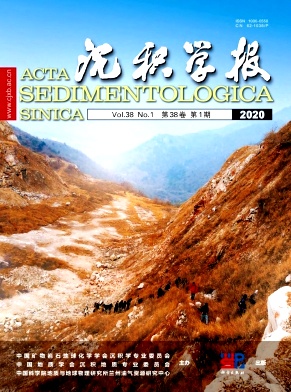








 DownLoad:
DownLoad:
